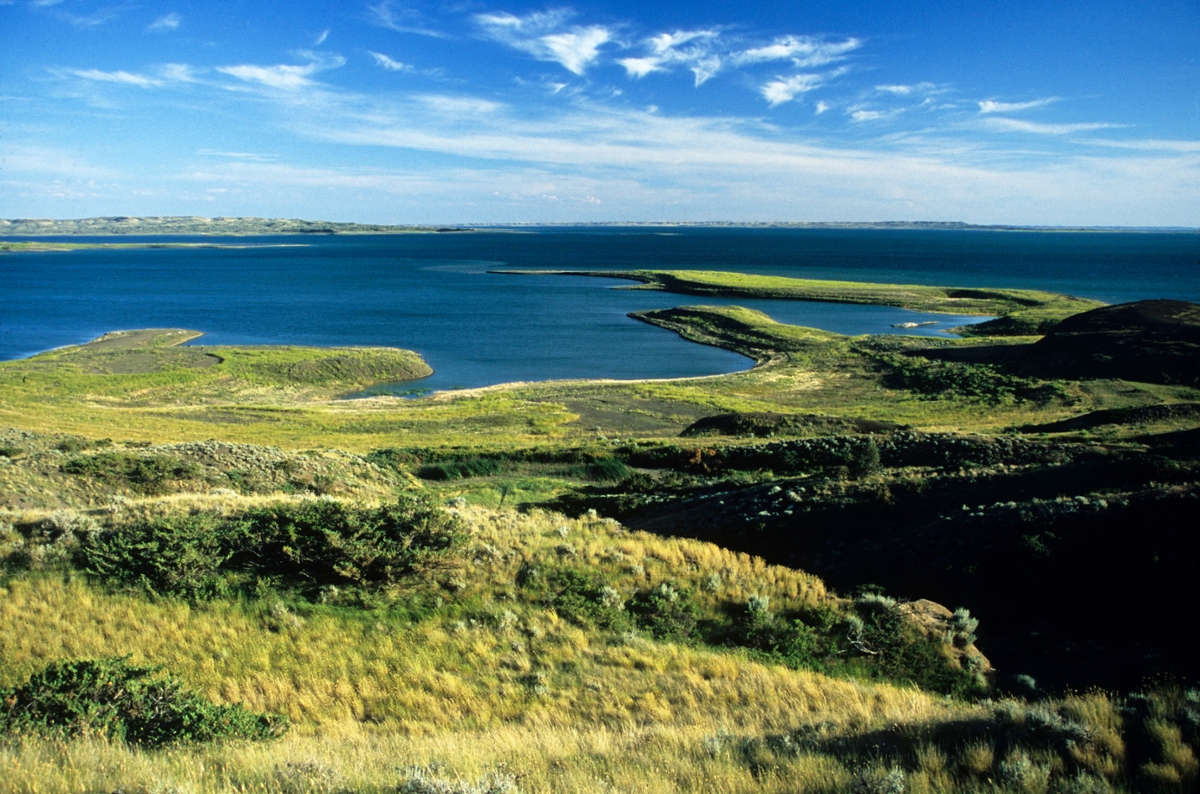Fort Peck
 Carved river breaks, rugged and sculptured badlands, an ocean of water and a landscape as unchanged as when nomadic Plains Indians followed the rhythm of the seasons and the patterns of the great bison herds, best describes this region of northeast Montana.
Carved river breaks, rugged and sculptured badlands, an ocean of water and a landscape as unchanged as when nomadic Plains Indians followed the rhythm of the seasons and the patterns of the great bison herds, best describes this region of northeast Montana.
The stretch of Missouri River Country from the Fred Robinson Bridge on Hwy 191 to the town of Fort Peck—about 150 air miles—is a showcase of sandstone creatures and badlands that helps bring to mind some 65 million years ago, when much of Montana east of the mountains was covered by a shallow inland sea. This range was part of a hot and humid sub-tropical coastline of marshes, rivers and river deltas. With dense vegetation near the watercourses and grassy plains farther to the west, it was the perfect climate and habitat for Tyrannosaurus Rex, Albertosaurus, Mosasaurus (a marine reptile) and other giant creatures. Thanks to erosion, some of the richest records of prehistoric life in the world came to light, and today, continue to be, uncovered here. In 1902, one of the first intact T-Rex fossils ever found was discovered near Jordan in the Hell Creek Badlands. Home to much of this dinosaur burial ground is the CMR National Wildlife Refuge.
University of Montana's Department of Geography
